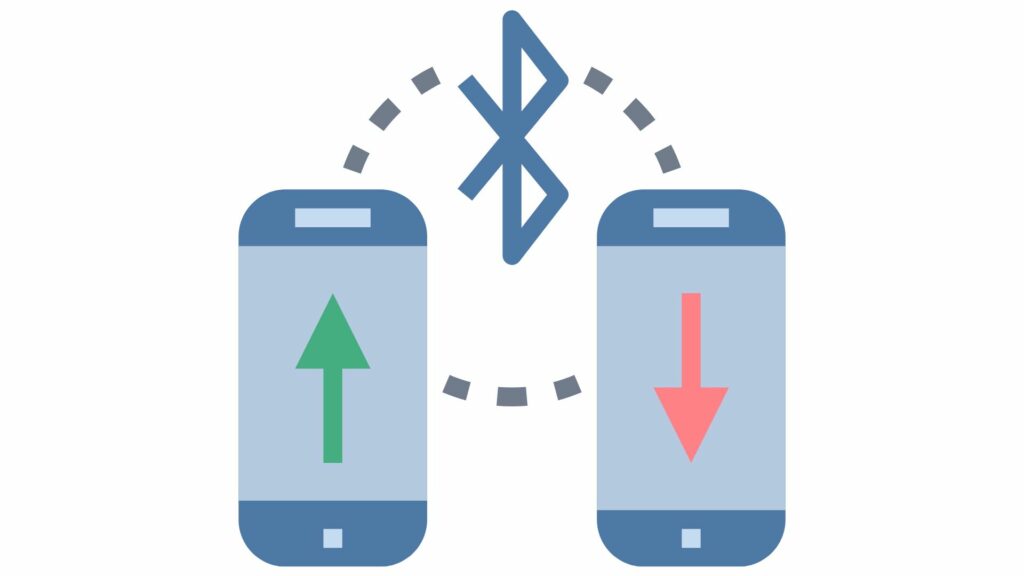In our connected world, over 4.7 billion devices use Bluetooth technology. From smartphones to smart locks, fitness trackers to headphones, Bluetooth's invisible web connects us like never before. While convenient, this connectivity opens the door to hackers. It's no surprise, then, that many people are Googling "How to secure Bluetooth devices?" for security solutions.
To secure Bluetooth devices, do the following:
Keep it updated
Use strong and unique passwords
Turn off Bluetooth when not in use
Be picky about accepting pairing requests
Beware of setting up pairing in public spaces
Install trusted antivirus software
Make sure Bluetooth apps use HTTPS for data transfer
Limit Airdrop or quick-sharing capabilities
Use a Random MAC Address
Avoid legacy pairing methods
Securing Bluetooth devices can be a big topic. So, I've split it into three parts: keeping Bluetooth client devices secure, protecting Bluetooth connections, and securing Bluetooth peripheral devices. Let's start with ways to ensure our Bluetooth client devices are secure.

How to secure Bluetooth Client devices
Before diving into the nitty-gritty of securing your Bluetooth client devices, let's quickly understand what they are. Bluetooth client devices are those that initiate the connection to other devices. Examples of such devices include your smartphone, laptop, or tablet.
Now, let's look at some effective ways to keep these devices secure:
Keep it up to date
One of the easiest ways to maintain security is by updating your device's operating system regularly. These updates often include patches for vulnerabilities that hackers love to exploit. So, don't snooze on those updates; they're like a suit of armor for your device.
Always turn off Bluetooth when not in use
Don't leave your digital door wide open. Switch off Bluetooth when you're not using it to minimize the risk of unauthorized access. Leaving Bluetooth on makes your device discoverable and potentially visible to nearby devices, including those operated by hackers.
On the other hand, by turning off your device’s Bluetooth radio, you reduce the chance of a hacker discovering and connecting to your device.
Switching off Bluetooth can help minimize interruptions from unwanted connection requests or pairings, particularly in busy or public locations where multiple Bluetooth-enabled devices are present.
In fact, a user on Samsung's forum posted a question asking how to turn off Bluetooth visibility. This was prompted by a notification they received while shopping, asking if they wanted to connect to a nearby Galaxy watch, which they knew wasn't their own.
Steps to turn off Bluetooth discoverability on Android:
Open the 'Settings' app, typically represented by a gear icon.
Scroll down and tap 'Connections'
Click More Connection Settings
Click “Nearby Device Scanning”
Toggle to “OFF”
Steps to turn off Bluetooth on iPhones:
Open the 'Settings' app, typically represented by a gear icon.
Scroll down and tap on 'Bluetooth.'
Toggle the Bluetooth switch to the 'Off' position to disable Bluetooth.
Be Picky About Pairing
When it comes to connecting with other devices, practice the art of saying "no" to unknown pairing requests. Be like a bouncer at an exclusive club, only allowing in the devices you know and trust.
Restrict Airdrop or Quick Share features
Airdrop and Quick Share are two convenient features available on Apple and Android devices, respectively, that allow users to quickly and wirelessly share files, photos, and other data with nearby devices.
The potential danger of both these features is that they are set to "Everyone" by default. This means strangers can send you unsolicited files, which could potentially contain malicious content, spam, or inappropriate materials.
To reduce the risk, restrict Airdrop to "Contacts Only" or turn off Quick Share. This way, only people in your contact list will be able to send you files or see your device as available for sharing. And turning off Quick Share will prevent your device from being discoverable to other nearby devices altogether.
Install trusted antivirus software
Antivirus software is designed to detect and remove malicious software, viruses, and other threats that can infect your device. An antivirus program can detect and prevent malware that can spread through Bluetooth connections, protecting your device from potentially harmful attacks.
Make sure Bluetooth apps use HTTPS for data transfer
HTTPS is a protocol that provides secure communication over the internet. It encrypts the data sent between devices and protects it from being intercepted or modified by attackers.
When Bluetooth apps use HTTPS for sending data to servers, it ensures that that data is secure and cannot be intercepted or modified by attackers. This is especially important when transferring sensitive data such as smart lock passwords, and other access credentials.

How to secure Bluetooth Connections
Beware of setting up pairing in public places
Pairing is the process of establishing a secure connection between two Bluetooth-enabled devices. During pairing, the two devices exchange a secret key that is used to encrypt data exchanged between them.
One of the dangers of setting up pairing in a public place is that other people may be able to intercept the pairing process and obtain the secret key. This would allow them to connect to the paired devices and potentially steal sensitive data or install malware.
To avoid this risk, it's important to set up pairing in a secure environment where you can be sure that no one else is intercepting the process. If you need to set up pairing in a public place, make sure that you use a secure method, such as numeric comparison or passkey entry, that requires confirmation from both devices before the pairing is completed.
Avoid legacy pairing methods
Avoid weak pairing methods like Just Works. Just Works is a simple pairing method that does not require any confirmation from the user. Not actively involving the user in the pairing process makes the connection more susceptible to impersonation attacks.
If you're wondering whether your Bluetooth connection is using "Just Works", one telltale sign is that you won't be prompted to enter a PIN or passcode during the pairing process. This is because "Just Works" doesn't require any user input for authentication or encryption.

How to secure Bluetooth Peripheral devices
Bluetooth peripheral devices are accessory devices that can be connected to your smartphone, tablet, or computer using Bluetooth technology. These devices can include wireless headphones, speakers, keyboards, mice, smartwatches, and other types of wireless gadgets.
Here is how you can protect them:
Use strong and unique passwords
Stay away from default passwords. Default passwords are the ones that come with your device and are often easy to guess or widely known. Hackers can use tools like Car whisperer to exploit these default passwords and gain access to your Bluetooth device. Car whisperer, for example, can connect to vulnerable Bluetooth-enabled headsets in cars and record conversations happening inside.
Use a random MAC address
A MAC address is a unique identifier assigned to your device's network interface. By default, your Bluetooth device's MAC address is broadcast to anyone in range, which can potentially allow third parties to track your movements and activities.
MAC address randomization is a feature provided by the Bluetooth standard that helps prevent tracking by periodically generating a new random MAC address and using it instead of the device's actual MAC address when connecting to Bluetooth networks. This helps prevent others from tracking your device's movements and activities over time.
While some Bluetooth peripherals may not support MAC address randomization, many newer devices do. It's always a good idea to opt for devices that support this feature if privacy is a concern for you.
Final Thoughts
In a world where the invisible web of Bluetooth technology connects us all, securing our devices has become a necessity. As with any good horror story, the threat of hackers looms large, waiting to strike when we least expect it.
But there are steps to keep such digital demons at bay. To keep our Bluetooth devices secure, we should update them regularly, use strong passwords, turn off Bluetooth when not in use, avoid pairing in public, and install antivirus software. We should also use secure pairing methods and random MAC addresses for peripheral devices.
With these measures in place, we can continue to enjoy the convenience of Bluetooth technology while keeping our devices safe from harm.